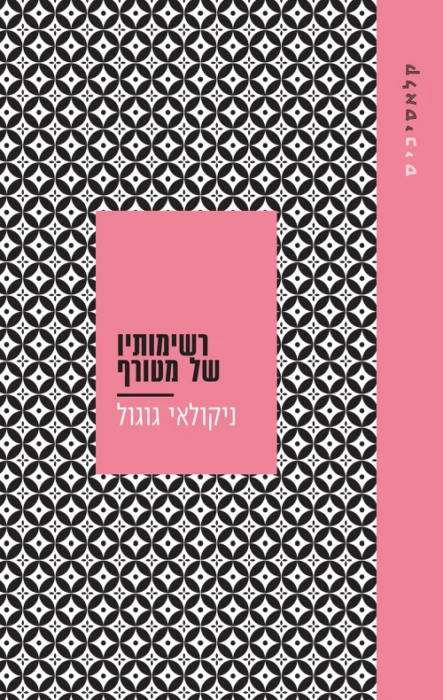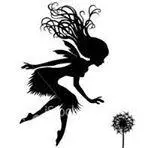For English review, please scroll down.
ניקולאי גוגול נחשב לאחד מגדולי הסאטיריקנים ברוסיה , אולי כי ידע היטב להסתכל לשיגעון בעיניים ולצחוק ראשון. אבל בקובץ הנובלות "רשימותיו של מטורף", השיגעון הזה לא הצחיק אותי. הוא רק גרם לי ללחץ במהלך הקריאה.
הנובלה הראשונה, "מריבה שרב איוואן איוואנוביץ' עם איוואן ניקיפורוביץ'", מתחילה בכמעט־כלום: מישהו קרא למישהו "אווז" , ומכאן נולדת סאגה שלמה של עלבונות, קללות, חרמות, תלונות רשמיות והידרדרות כללית של הכפר כולו לתוך מצב צבירה נרקיסיסטי־אבסורדי. המריבה בין שני השכנים גולשת ומתפשטת, משתלטת, והופכת את כל תושבי הכפר לחבורה של נפוחים, קטנוניים וחסרי מודעות עצמית, כאילו הם משחקים במחזה אבסורדי ולא מבינים כמה הם מגוחכים. כל אחד בטוח שהוא הנעלב הראשי של רוסיה. זה היה אמור להיות מצחיק, ואני מניחה שיש פה הומור , אבל הוא חומק ממני.
הנובלה השנייה, "רשימותיו של מטורף", כבר נכתבת ממש מתוך ראשו הקודח של פקיד זוטר שמתאהב בבתו של בכיר ומאבד אחיזה במציאות. ככל שהוא כותב, כך אנחנו מבינים כמה המציאות הזו נשמטת לו מבין האצבעות. הכל הופך לסוריאליסטי, ילדותי, ואבסורדי: כלבים כותבים יומנים, תאריכים משתנים בלי הסבר, ובסוף – בית משוגעים.
שתיהן יחד אמורות אולי לשקף תהליך של דעיכה: אחת של חברה (בפרובינציה האווילית), והשנייה של נפש בודדת. אבל החיבור ביניהן, לפחות עבורי, היה מתיש. במקום קומדיה שחורה , קיבלתי ריאליזם חרדתי עם פאניקה בין השורות.
האם יש כאן ביקורת חברתית? ברור. האם גוגול יודע לכתוב? אין ספק. האם נהניתי? לא ממש. שתיהן נובלות חכמות, אבל קרות. הומור של ניתוח קר, לא של חיוך חם.
אם יש לקח מהקריאה הזו, אולי הוא זה: שיגעון, גם כשהוא מתוזמר במדויק, לא תמיד מצליח להצחיק – לפעמים הוא רק משאיר אותך עם כאב ראש.
רשימותיו של מטורף/ ניקולאי ו. גוגול
הוצאת עם עובד, 2025, 150 עמ'
דירוג SIVI –
איכות אודיו –

סידרת קלאסי כיס#
לדף הסידרה –
Nikolai Gogol is considered one of Russia’s greatest satirists—perhaps because he knew how to stare madness in the face and laugh first. But that madness didn't make me laugh in the novella collection Diary of a Madman. It just stressed me out.
The first novella, The Tale of How Ivan Ivanovich Quarreled with Ivan Nikiforovich, begins with a near-nothing: one man calls another a “goose”—and from that, a whole saga of insults, curses, feuds, formal complaints, and the general unraveling of village life into a narcissistic-absurdist state unfolds. The quarrel between these neighbors escalates, spreads, and takes over, turning the villagers into a swollen, petty, and self-righteous mob, as if they’re acting in an absurdist play without realizing how ridiculous they look. Everyone is convinced they’re the most deeply offended person in all of Russia. It’s meant to be funny—and I assume it is—but the humor slipped right past me.
The second novella, Diary of a Madman, is written from inside the fevered mind of a low-level bureaucrat who falls in love with the daughter of a high-ranking official and gradually loses his grip on reality. The more he writes, the more we see that reality is slipping through his fingers. It all becomes surreal, childlike, and absurd: dogs write diaries, dates change without explanation, and he’s in an asylum in the end.
The two novellas might be meant to reflect a dual collapse: one of society (in a provincial farce), and one of the individual psyche. But for me, the combination was exhausting. Instead of dark comedy, I got anxious realism with panic between the lines.
Is there social critique? Obviously. Can Gogol write? No doubt. Did I enjoy it? Not really. These are smart novellas—but cold ones. Humor is like a clinical dissection, not a warm grin.
If there’s a takeaway here, it might be this: madness, even when precisely orchestrated, doesn’t always provoke laughter—sometimes it just leaves you with a headache.
לגלות עוד מהאתר Sivi's Books
Subscribe to get the latest posts sent to your email.

